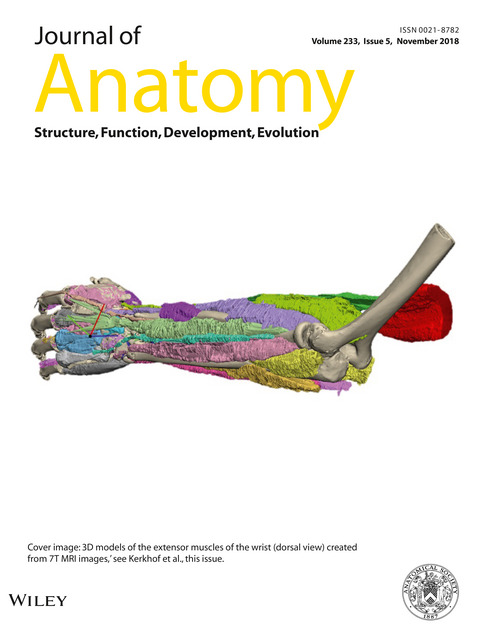 J Anat. 2018 Oct 9. doi: 10.1111/joa.12893. [Epub ahead of print]
J Anat. 2018 Oct 9. doi: 10.1111/joa.12893. [Epub ahead of print]
Estrogen therapy associated with mechanical vibration improves bone microarchitecture and density in osteopenic female mice
Moura MLA1, Fugimoto M1, Kawachi APM1, de Oliveira ML2, Lazaretti-Castro M2, Reginato RD1.
Author information:
1. Mineralized Tissue and Histology Research Laboratory, Department of Morphology and Genetics, School of Medicine, Federal University of São Paulo, São Paulo, Brazil.
2. Division of Endocrinology, Department of Medicine, School of Medicine, Federal University of São Paulo, São Paulo, Brazil.
Abstract
We investigated the effects of estrogen therapy (ET) associated with low-intensity and high-frequency mechanical vibration (MV) on bone tissue in osteopenic female mice. Fifty 3-month-old female Swiss mice were ovariectomized (OVX) or sham-operated, and distributed after 4 months into the following groups, with 10 animals per group: Sham; Control, OVX + vehicle solution; MV, OVX + MV; ET, OVX + 17β-estradiol; and MV + ET, OVX + MV and 17β-estradiol. Both vehicle solution and 17β-estradiol (10 μg kg-1 day-1 ) were injected subcutaneously 7 days per week, and vibration (0.6 g, 60 Hz) was delivered 30 min per day, 5 days per week. Bone mineral density (BMD) and body composition were evaluated by densitometry at baseline and after 60 days of treatment when the animals were euthanized, and their femurs underwent histomorphometric and histochemical analyses. The Control group showed increased weight and fat percentage, while the ET and MV + ET groups showed increased lean mass but decreased fat percentage. At the end of the treatment period, the BMD decreased in Control, remained constant in Sham and MV, and increased in ET and MV + ET. The MV + ET group showed the greatest bone volume compared with Sham (129%), Control (350%), MV (304%) and ET (14%). No differences occurred in cortical thickness. The Control group showed the highest content of mature collagen fibers, while the MV + ET group showed the highest content of immature collagen fibers. In conclusion, ET plus MV was effective in improving bone quality in osteopenic female mice, and this improvement is associated with specific changes in trabecular but not cortical bone.


